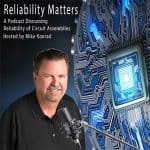
An Interview with George Williams
George Williams joins us this week on Masterminds in Maintenance to discuss common mistakes he sees after running audits with maintenance and reliability teams. The short version? Garbage data in = garbage data out.
[Read more…]









 Ask a question or send along a comment.
Please login to view and use the contact form.
Ask a question or send along a comment.
Please login to view and use the contact form.